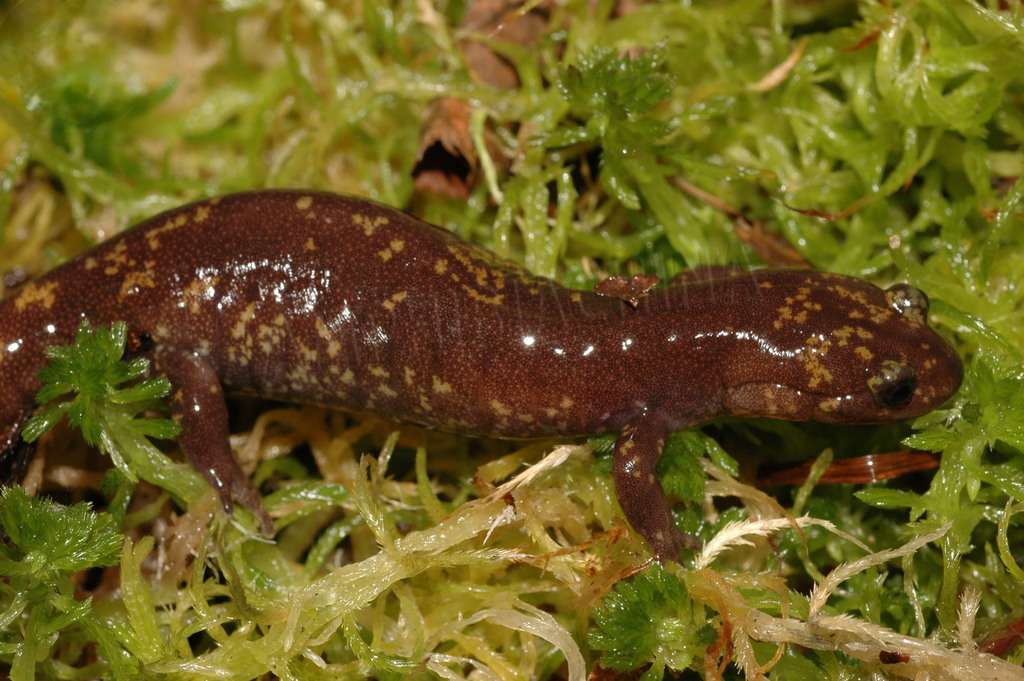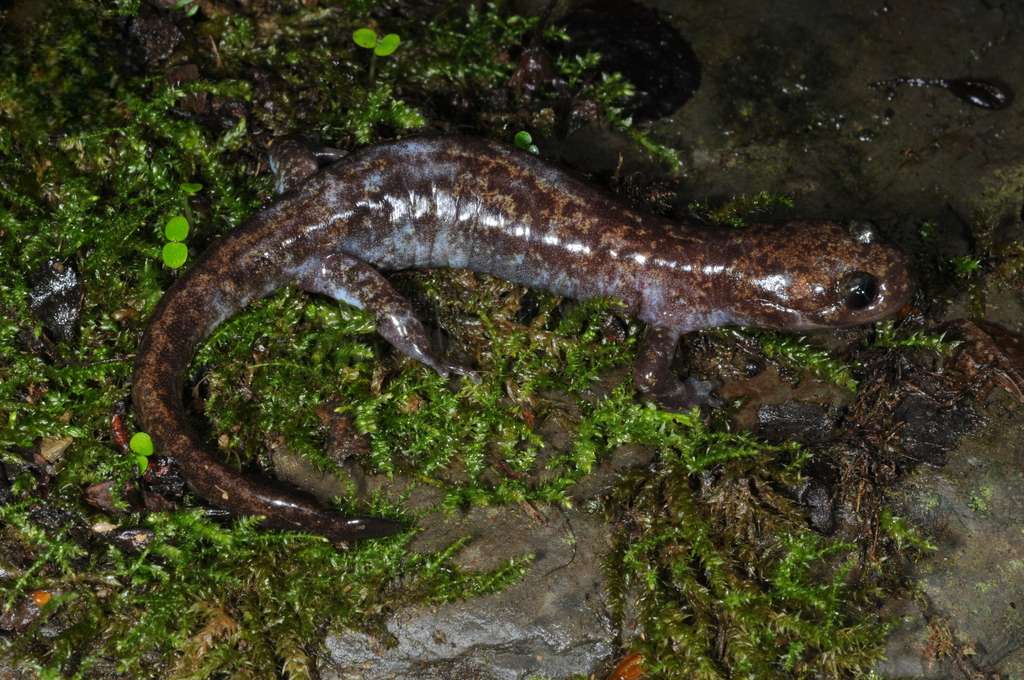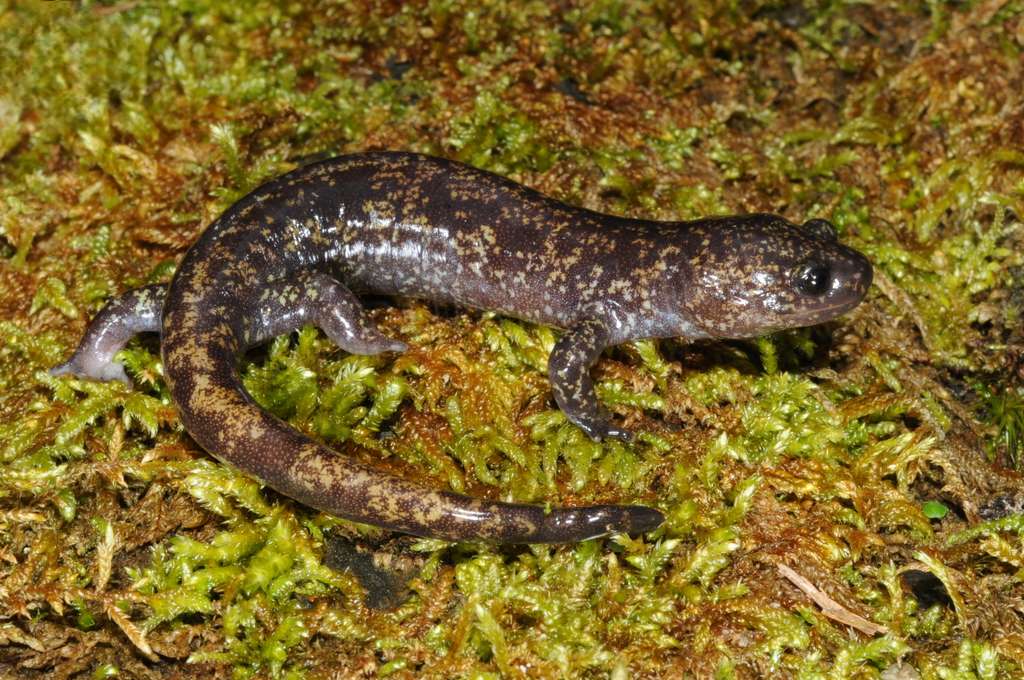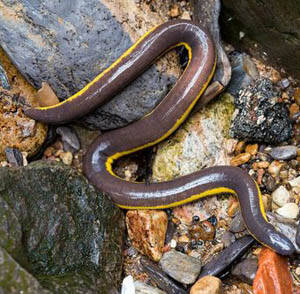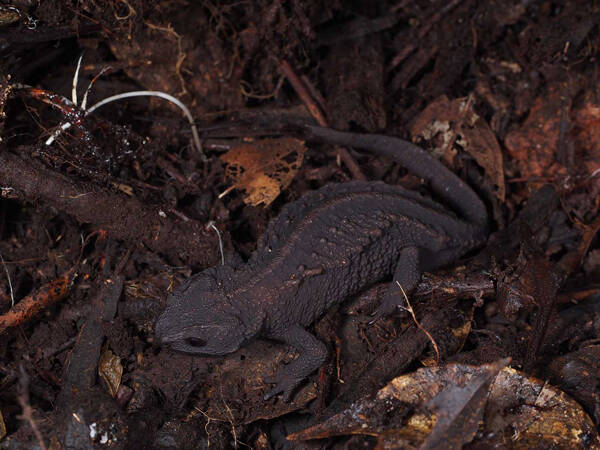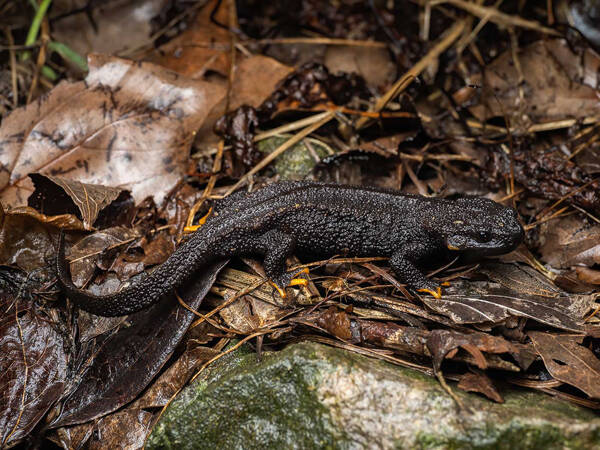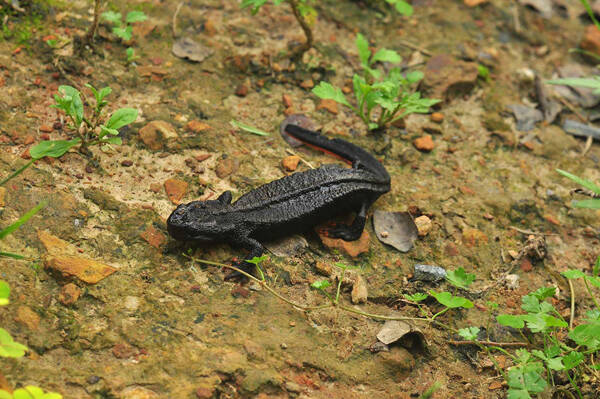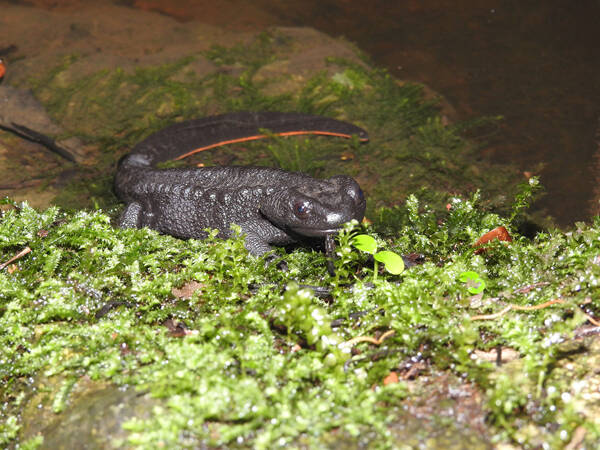Hynobius formosanus (Formosan Salamander)
IUCN
NTBasic Information
Scientific classification
- name:Hynobius formosanus (Formosan Salamander)
- Scientific Name:Hynobius formosanus
- Outline:Urodela
- Family:Hynobius formosanus
Vital signs
- length:Total length 8–12 cm; max ~14–15 cm
- Weight:Small-bodied amphibian; size-dependent
- lifetime:Approx. 6–12 years (estimated)
Feature
Taiwan endemic; alpine cold-water specialist; paired egg sacs (external fertilisation); stream larvae with external gills.
Distribution and Habitat
Montane Taiwan headwaters and humid mossy forests at ~2,000–3,000 m; under stones/wood/moss.
Appearance
Dark brown/blackish with fine pale speckles; distinct costal grooves; short limbs; laterally compressed tail.
Details
Hynobius formosanus—the Formosan salamander—is a Taiwan‑endemic hynobiid inhabiting cold headwaters and mossy montane forests. Mostly nocturnal and secretive, it shelters under stones, logs and within crevices.
Ecology & Biology
Diet: small arthropods (insect larvae, isopods, springtails) taken among moss and leaf litter.
Reproduction: external fertilisation; females attach paired gelatinous egg sacs beneath stones/wood in cool pools or slow stream runs. Larvae are stream‑dwelling with external gills and metamorphose after months to ~1 year.
Seasonality: breeding in late winter–spring; strong dependence on cold, well‑oxygenated water.
Identification
Form: small–medium hynobiid with distinct costal grooves.
Colour: dark brown to blackish with fine pale speckling; paler venter.
Limbs/Tail: short limbs; laterally compressed tail aiding swimming.
Size & Longevity
Total length: typically 8–12 cm, up to ~14–15 cm.
Life: roughly 6–12 years (wild estimate).
Range & Habitat
Montane Taiwan (e.g., Hehuanshan and adjacent ranges) around 2,000–3,000 m, in spring‑fed headwaters, seepage pools and humid conifer–broadleaf forests; typically under stones, moss and woody debris.
Conservation & People
Threats: road/recreation disturbance, stream modification and water‑quality change, habitat fragmentation and climate warming.
Measures: protected in parks/reserves and by Taiwanese law; avoid trampling/stone‑turning in headwaters.
IUCN: Near Threatened (NT) (check latest assessment).
FAQ
Q1. Distinction from Hynobius arisanensis? Differences in spotting, range/elevation and diagnostic counts (e.g., costal grooves); verify with locality and keys.
Q2. Are adults aquatic year‑round? Adults often occupy humid terrestrial microhabitats near streams; they enter cool water to breed. Larvae are stream‑dwelling.
Q3. Captivity? Not recommended due to legal and environmental requirements (low temperature, high oxygen, pristine water).
Q4. Conservation focus? Maintain clean headwaters, limit disruptive works and monitor climate impacts in alpine streams.


